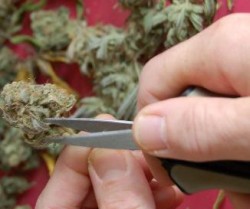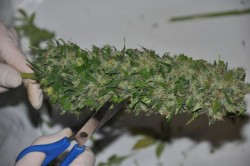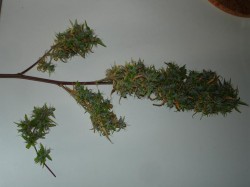MENU
- Wet Trimming Machines
- Shop All Wet Trimmers
- Centurion Pro Trimmers
- Twister Trimmers
- Trim Pro Trimmers
- Mobius Trimmers
- Triminator Trimmers
- 2 in 1 Trimmers
- EzTrim Trimmers
- Piranha Trimmers
- DL Wholesale
- Trim Daddy Scissors
- Pro Trim Elite Scissors Wet
- Speedee Trim Hand Held
- Zoom Trimmers
- ThunderVAK
- Trim Reaper
- Pro Cut Trimmers
- The Magic Trimmer
- The Little Prospector
- Trim R Matic
- Trimmer Lubricant - Cleaners
- Grow1 Hand Held Trimmers
- Dry Trimming Machines
- Shop All Dry Trimmers
- Centurion Pro Trimmers
- Centurion Pro DBT Dry Trimmers
- Twister Trimmers
- TrimPal Trimmers
- Mobius Trimmers
- Futurola Dry Trimmers
- GreenBroz Trimmers
- Tom's Tumblers
- Speedee Trim Hand Held
- Triminator Trimmers
- Trim Pro Trimmers
- Trim Buddy Trimmers
- TrimIt Dry Trimmers
- EzTrim Trimmers
- Trim Workz Trimmers
- Pro Cut Trimmers
- Mean Green Trimmers
- Trim Bag Trimmers
- Kairos Cultivator
- Creative Harvest
- Zoom Trimmers
- Grow1 Hand Held Trimmer
- Pro Trim Elite Scissors Dry
- Trim Daddy Scissors
- Trimmer Lubricant - Resin Remover
- Parts & Accessories
- Shop All Parts & Accessories
- Centurion Pro Parts
- Centurion Pro Dry Trimmer Parts
- Twister Trimmer Parts
- TrimPal Parts
- Tom's Tumbler Parts
- Mobius Parts
- High Tech Shredder Parts
- Trim Reaper Parts
- EzTrim Parts
- Triminator Trimmer Parts
- TrimPro Parts
- TrimIt Dry Trimmer Parts
- Pro Cut Trimmer Parts
- 2in1 Automatic Trimmer Parts
- Support The Roots Parts
- Piranha Trimmer Parts
- Creative Harvest Parts
- Extraction | Rosin | Bubble
- Shop All Rosin Presses
- Shop All Pollinator | Sift | Oil | C02 Extraction
- Rotary-Evaporators-Distillation
- Closed Loop Extraction
- Extract Tools & Accessories
- Original Resinator Extractors
- Extraction Contraption
- Harvest Right Freeze Dryer
- Vacuum Ovens
- Grasshopper Extractors
- Source Turbo Extractors
- GreenBroz Extractors
- Rosin Tech Presses
- RosinBud Rosin Presses
- NugSmasher Presses
- Honey Bee Pollenator
- Pure Pressure Presses
- Piecemaker Pollen Press
- Jack Puck Press
- Mila's Famous Pollinators | Kief Tumblers
- Bubble Magic Pollinators | Kief Tumblers
- PollenMaster Pollinators | Kief Tumblers
- Pollenex Pollinators | Kief Tumblers
- The Kief Thief Dry Sift
- NugSmasher Sifters
- Bubble Bags Fresh Headies
- Bubble Magic Bubble Bags
- Boldt Bags All Bags & Kits
- Boldt Bags Build Your Own Bag
- Drop Bags
- Bubbleator B-Quick
- Grow1 Extraction Bags
- AWOL Odor Lock Bags
- Funk Fighter Bags
- Dry & Mighty Bags
- Payload Bags
- Pre Roll Machines | Cone Loaders
- Shop All Pre-Roll Machines
- Thousand Per Hour (TPH) Pre-Roller
- Futurola Knock Box + Add Ons
- Sluice Box MJ & Packer
- Doob Cube & Mini Cube
- Fill n Fold Cone Loaders
- Smoke Cones Filling Machines
- Humboldt Cones Machines
- King Kones Pre Roll Machine
- STM Canna
- Pre Roll Cones
- Shredders | Grinders
- Shop All Shredder-Grinders
- High Tech Shredders
- Futurola Shredders
- Triminator Shredders
- EzTrim Shredders
- Ameri Shred Shredders
- Budget Shredder ( Personal Use)
- STM Canna Revolution Grinder 2.0 - Mini
- Mobius Industrial Shredders
- GreenBroz Model G Precision Grinder
- GreenBroz G Lite Commercial Grinder
- King Shred by King Kone
- Toms Industrial Shredders
- Harvesting | Buckers
- Shop All Buckers
- Centurion Pro Buckers
- Twister Buckers
- Triminator Buckers
- Mobius Bucking Machines
- Trim Workz Buckers
- EzTrim Buckers
- Locust Buckers-Destemmers
- Strip It Up Buckers
- Trim Buddy Buckers
- TrimPro Buckers
- GreenBroz Harvesting
- Cultivation-Cloners
- Indoor Grow Lights
- Grow Houses
- Hemp Processing
- Tom's whole plant bucker




